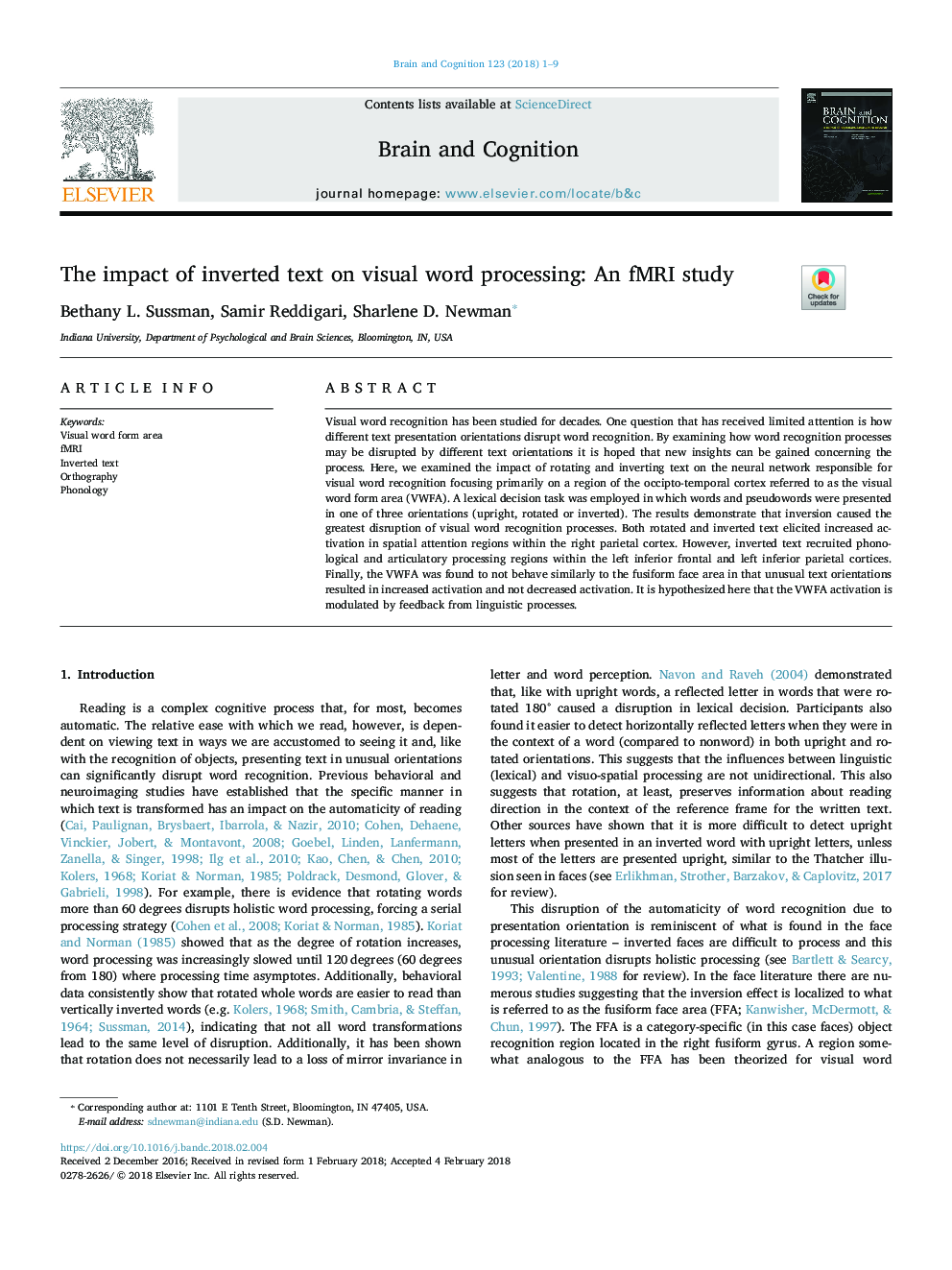| Article ID | Journal | Published Year | Pages | File Type |
|---|---|---|---|---|
| 7282581 | Brain and Cognition | 2018 | 9 Pages |
Abstract
Visual word recognition has been studied for decades. One question that has received limited attention is how different text presentation orientations disrupt word recognition. By examining how word recognition processes may be disrupted by different text orientations it is hoped that new insights can be gained concerning the process. Here, we examined the impact of rotating and inverting text on the neural network responsible for visual word recognition focusing primarily on a region of the occipto-temporal cortex referred to as the visual word form area (VWFA). A lexical decision task was employed in which words and pseudowords were presented in one of three orientations (upright, rotated or inverted). The results demonstrate that inversion caused the greatest disruption of visual word recognition processes. Both rotated and inverted text elicited increased activation in spatial attention regions within the right parietal cortex. However, inverted text recruited phonological and articulatory processing regions within the left inferior frontal and left inferior parietal cortices. Finally, the VWFA was found to not behave similarly to the fusiform face area in that unusual text orientations resulted in increased activation and not decreased activation. It is hypothesized here that the VWFA activation is modulated by feedback from linguistic processes.
Related Topics
Life Sciences
Neuroscience
Cognitive Neuroscience
Authors
Bethany L. Sussman, Samir Reddigari, Sharlene D. Newman,
